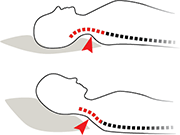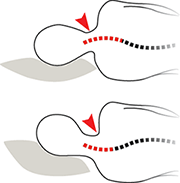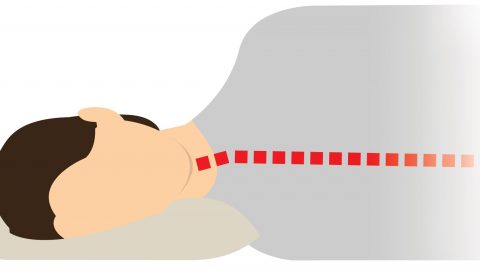
Are you tired of tossing and turning at night? Or maybe you’re waking up with nagging neck pain that just won’t go away? The way you position your pillow while sleeping could be the culprit. Yep, that’s right—your pillow’s position can make or break your sleep quality. In this guide, we’ll explore the proper pillow position for sleeping so you can enjoy restful nights and wake up feeling refreshed.
Why Pillow Positioning Is So Important
You might not give it much thought, but the way your pillow is positioned plays a crucial role in your sleep health. A properly positioned pillow supports the natural curve of your spine, keeps your neck in alignment, and helps prevent discomfort. If you don’t position your pillow properly, you might experience issues like neck pain, headaches, or even back problems. But with the right positioning, your pillow can help you achieve deeper, more restorative sleep.
How to Choose the Right Pillow for Optimal Positioning
Before we dive into the proper pillow position for sleeping, let’s talk about selecting the right pillow. Because no matter how well you position it, the wrong pillow won’t give you the support you need.
- Sleep Position: Your sleep position is the first thing to consider. Side sleepers typically need a firmer, higher pillow to fill the space between their head and the mattress. Back sleepers benefit from a medium-thickness pillow that supports the neck without pushing the head too far forward. Stomach sleepers often need a very thin pillow—or none at all—to keep the spine in a neutral position.
- Pillow Filling: The fill inside your pillow plays a huge role in comfort and support. Memory foam pillows mold to your head and neck, offering personalized support, while down or feather pillows provide a soft, cushioned feel. If you’re looking for something a bit different, consider buckwheat pillows—they’re filled with natural buckwheat hulls, which allow for excellent airflow and customizable firmness.
- Pillow Loft: Loft refers to the height or thickness of your pillow, which is crucial for maintaining proper head and neck alignment with your spine. The right loft keeps your head in a neutral position, avoiding strain. If you’re unsure about the ideal loft for your needs, consider an adjustable pillow with a zippered opening. These pillows allow you to add or remove fill, customizing the loft to suit your comfort and sleeping position perfectly.
Proper Pillow Position for Different Sleeping Styles
Now that you’ve got the right pillow, let’s get into the best way to position it based on your preferred sleeping style.
1. For Back Sleepers:

- Pillow Positioning: If you sleep on your back, place your pillow so that it supports the natural curve of your neck. Your head should rest comfortably in the center of the pillow, without tilting too far forward or backward. This position helps keep your spine aligned.
- Additional Support: To further reduce strain on your lower back, consider placing a small pillow or rolled towel under your knees.
2. For Side Sleepers:

- Pillow Positioning: Side sleepers need a pillow that fills the space between their ear and the mattress, keeping the head and neck in a straight line with the spine. The pillow should be thick enough to maintain this alignment, but not so thick that it causes your head to tilt.
- Arm Placement: Keep your arms parallel to your body or hug a pillow to avoid shoulder strain. If you’re prone to shoulder pain, placing a pillow between your knees can also help maintain proper alignment.
3. For Stomach Sleepers:
- Pillow Positioning: Stomach sleepers should use a very thin pillow or none at all to prevent excessive arching of the neck. By minimizing the height under your head, you help keep your spine in a more neutral position.
- Additional Support: Consider placing a pillow under your pelvis to maintain a natural curve in your lower back, reducing strain on your spine.
Fluff, Squish, and Shape: Achieving the Proper Pillow Position for Sleeping
When it comes to getting that perfect pillow shape, malleable pillow filling like down or buckwheat work well. Moldable pillow fillings like these allow you to fluff, squish, and shape your pillow exactly how you like, giving you just the right support where you need it. You can easily adjust these pillows on the fly. On the other hand, memory foam pillows don’t offer the same flexibility. They’re firm and hold their shape, which can be great for consistent support but doesn’t allow for much customization. So, if you’re someone who likes to mold your pillow into the perfect nest, down or buckwheat might be the way to go!
Common Mistakes to Avoid with Pillow Positioning
It’s easy to position your pillow incorrectly. Avoid these common mistakes:
- Pillow Too High or Too Low: The height of your pillow (loft) is crucial. A pillow that’s too high can push your neck upwards, while one that’s too low can cause your neck to sink. Both scenarios can lead to discomfort and a restless night.
- Ignoring the Lifespan of Your Pillow: Over time, most pillows lose their shape and support, which can negatively impact your sleep quality. Traditional pillows need to be replaced more frequently, but if you’re using a buckwheat pillow, you’re in luck—they tend to last much longer, maintaining their support and comfort for years with proper care. If your pillow feels flat or unsupportive, it’s probably time to consider a replacement.
- Incompatible Mattress and Pillow Combo: Your mattress and pillow should work together to support your body. A mattress that’s too soft or too firm can throw off your alignment, even if your pillow is positioned correctly.
The Bottom Line on Pillow Positioning
Achieving the proper pillow position for sleeping can significantly enhance your sleep quality and overall well-being. By keeping your spine aligned and providing the right support, you can wake up feeling refreshed and free from discomfort. So, take a moment to assess your pillow and sleep habits, make any necessary adjustments, and get ready for some sweet, restful sleep!




